#Andrea Navagero
Text
Mistakes in Magnificent century part II
Relationships
1. Suleiman and Hurrem

In the show, they talked about their love a lot, but what they failed about was showing it. It seemed like Hurrem was hopelessly in love with a man of a giant ego, who would bed and even fall for every second woman. Well, that's a huge lie, Suleiman was strictly monogamous to Hurrem, only two concubines were recorded to be sent to him they were gifted by the provincial governor,but they were set to marry by government officials after hurrem threw a tantrum. No more concubines were ever sent to him and Suleiman remained loyal to her ever since. Above that, the abusive relationship depicted in the show is pure drama, Suleiman never banished Hürrem, never asked her to kill herself to test loyalty etc. Their relationship was sensual and mutually convenient as we can see in their letters. However, my personal opinion is that Hurrem's love is a little bit exaggerated in the show, She was ready to kill herself and her children if Suleiman had died. However, I have never had the impression that Hurrem actually loved Suleiman that much, she definitely loved him,but even if the feeling was so big that it exceeded her own life, the love of her children was without a doubt greater, so in my opinion, if Suleiman truly fell ill in near death state, Hürrem's first instinct would have been to secure well being of her children.
2.Ayşe Hafsa Sultan and her in-laws.
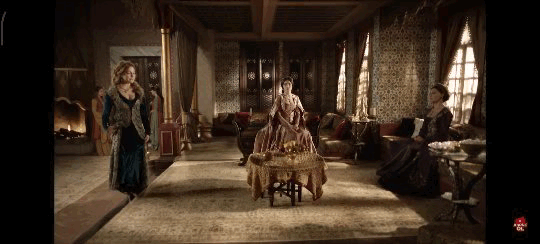
In MC, Hafsa clearly prefers Mahidevran over Hürrem,however in real life she understood her own and concubines position did not take sides in their hidden rivalry, as the manager of harem customs demanded that she would treat them according to their ranks, however can be deduced that Hafsa could not help,but have warm feelings towards Hürrem. We don't know the reasons, perhaps she liked her personality, enjoyed her company, respected her as the mother of 6 grandchildren or just loved her because she and her son loved each other so much. But one thing is clear, she was tolerating Hürrem more than any mother in law ever would, especially in her position. Their "special" relationship can be indicated by events of 1526. The provincial governor sent two concubines, one for Hafsa and one for Suleiman, Hafsa did an absolutely natural thing to prepare concubine for Suleiman and even gift her own one to him, that caused Hürrem to throw a tantrum and Hafsa, seeing Hürrem in that state, felt sorry for what she had done, sent concubines back and set them to marry other governors. That particular event gives us two assumptions: 1. Hafsa loved Hürrem enough to feel sorry for doing nothing wrong,just fulfilling her duties. 2. Hurrem's jealousy was not something new for them and she had likely done that before.
3.Hurrem and Mahidevran

First thing I would like to underline is that Mahidevran was never the only woman in Suleiman's life nor was she Haseki Sultan, so at first she would feel no threat from young Hürrem, However, things have changed after 1521, all other children of Suleiman died, Mahidevran became the mother of oldest prince and Hürrem was called to Suleiman again, that could have been humiliating for Mahidevran, because traditions were broken for a woman of inferior rank and now she was clear threat as not juts mother of other prince,but favourite of padişah. All those could cause tense between two women,but never in the history of them Living under the same room have Mahidevran beaten her, kalfas and aghas of harem would not let this occur and even if it did, punishment would have been recorded, so the story told by Venetian ambassador Andrea Navagero is either straight up dramatic lie or juts an exaggeration of tiny conflict that could have occured between two women. Otherwise, they were quite polite to one another and never showed hostility,when they met each other.
4. Relationship between sisters-in-law.
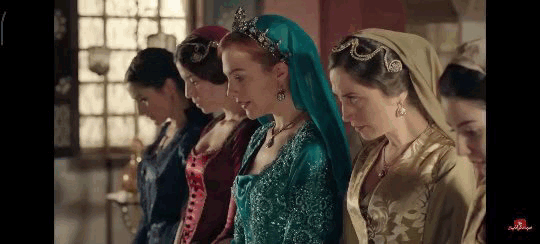
Most of Suleiman's sisters were portrayed against Hürrem for dramatic purposes,which to some extent was interesting but eventually grew boring.
It seems that out of all sisters Hatice was closest to Mahidevran, Şah was closest to Hürrem, beyhan had a very neutral attitude and probably respected both as their ranks demanded, while Fatma had no known interaction with Mahi- devran,but her relationship with Hürrem was stained.
As I have already said, Hatice had a close relationship with Mahidevran and regularly exchanged letters. In one of her letters mahidevran asks Hatice's well being and sends gratitude for the sincere kindness, friendship and compassion she and her husband showed to Mustafa and herself. Which means Hatice could have been either low key supportive to Mustafa or she was just a kind aunt to him. However, no tension between her and Hürrem was recorded, some even say she was great friends with her,but there is no proof for it. Either way, the fact that Hatice's and Hürrem's relationship was rather calm, we can assume that the support Mahidevran thanked her for was not her taking sides,but just expressing compassion towards the eldest nephew.
Second sisters Fatma, had no recorded interaction with Mahidevran,However she indeed had hostility towards Hürrem and Mihrimah, caused by their involvement in execution of her husband Kara Ahmed Paşa( who according to rumors became grand Vizier by Fatma's influence, but while possible, it's not proven). She was finally banished for her intrigues.
Beyhan did not have much of a relationship with either of them, she married quite early so did not spend much time in Manisa, where she could meet Mahidevran and due to the execution of her husband early in Süleiman's reign, she spent most of her life in voluntary exile.
Şah was really close to Hürrem,it is not known if the reason for the good bond was their mutual interest in charity and architecture or they shared some other political views. What is her close relationship with Hürrem, Süleyman and Mihrimah.
5. Gülfem and Hürrem

Before I go to specifically Hürrem and Gulfem, I would like to make a short summary of what the relationship between Gulfem and Suleiman was.
Gülfem was not Süleiman's concubine,but a high ranking harem manager,either promoted cariye or childhood friend of one of Süleiman's sisters. Indication of their close, platonic relationship is the fact that Suleiman entrusted Hürrem to her and she did not have a problem with it, which she would have if Gülfem was indeed a previous concubine. The relationship between her and Padişah was so close that she wrote openly and unofficially in her letters to him.
As for Hürrem, she was supervisor and mentor turned into closest friend Hürrem or perhaps any other Sultan had. In early days in harem, Gülfem was a double agent,who not only instructed Hürrem,but was also responsible for telling Suleiman about Hürrem's doing, in one such letters, Gülfem says that Hürrem had spent all the money,but when she sent agha to learn what the problem was Hürrem rejected him, latter she herself asked her about the problem and she surrendered, perhaps she had some fear and respect towards her. In later years, Gülfem constantly complains how tired she is to be a double agent and asks Suleiman to release her from such an obligation, which could indicate that Gulfem got closer to Hürrem . After that Gulfem indeed stopped telling Suleiman about her doings, so Hürrem either did nothing wrong anymore or Gulfem persuaded Suleiman to release her. The friendship of two women grew so much that Hürrem even mentioned in her greetings along with herself and her children.
6. Hatice and Ibrahim.
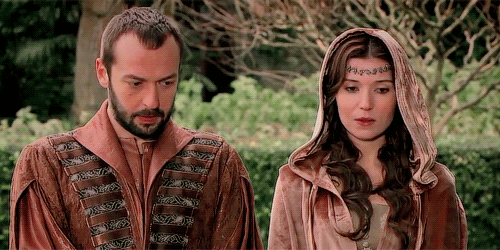
Long story short, they were never married, however it was theorised they were,when the Magnificent century was shot. Hatice was married twice first to Kapudan Iskender Pasha, then Çoban Mehmed paşa. İbrahim was married to a noblewoman for political purposes as an answer to raised aggression of people and high ranking officials after his assignation as grand Vizier.
7. İbrahim and Mustafa

In the tv show, Ibrahim's relationship with Mustafa is something like father and son's. However, in real life their relationship was far less heart warming. Mustafa was jealous of Ibrahim's closeness to Suleiman and once he expresses it openly, when Suleiman gifted İbrahim a luxurious saddle, who has to give it to Mustafa. Although, there are records of their units against common enemies, there is no indication of love between those two.
8. Handan and Safiye

Remember how the show depicted long lasting hatred between those two, that was always ending in Safiye dominating Handan even when she was Valide(particularly, in this scene)
In real life however, they tolerated one another and even created an alliance against Halime. Safiye definitely thought Handan to be easygoing. That's why she chose to support her son, thus remaining in power even after his accession, at least so she thought, however that "easygoing one" showed her true colours and banished that hell of a mother-in-law for good.
9. Kösem and "her children".

The exact number of Kösem's children is disputable, what we know for sure is that she was the mother of Murad, Ibrahim,Ayşe, Fatma and Kasım. The sources naming her children vary in numbers from 6 to 11. Other than those named, Hanzade sultan was almost certainly her daughter, historians also side to her, when it comes to identifying the mother of Şehzade Mehmed,who despite mixed opinions was almost certainly hers. However, sources list the birth of Mehmed, Gevherhan, Fatma, Ayşe and Hanzade to be between 1605-1608 and no birth of twins is recorded, so either one of them was born on different year and Kösem gave birth five times in a row or some of the children listed here were not hers. Gevherhan,in one of the letters, is named as full sister of Ahmed's eldest son, so in that case she was daughter of Mahfiruz. However, as there were no concubines listed as "mother of XX sultan or XY prince", so those children were either Kösem's or Mahfiruze's.
Osman, Bayazid and Burnaz Atike were not her children and despite her attempts to get close to Osman, Ahmed made it impossible, so the whole adopting young prince is just a dramatic exaggeration. Burnaz Atike was very close to Turhan Hatice, who was raised in her court and she likely supported her in rebelion.
10. Nurbanu and her in-laws.

In a TV show, the relationship between Nurbanu and her dear in-laws is more than a little bit intense.
However, in real life her relationship with Hürrem was more than just peaceful, based on the fact that Hürrem named the girl herself(Afife Nurbanu that means "victorious Queen of light") and she could have been Mehmed's concubine first and after his death and Selim's appointment as governor of Manisa she was gifted to him, we can assume that Hürrem chose Nurbanu as pillar of her princes and heir of her legacy. Considering, Nurbanu received letters from capital and was at least sometimes informed about the major events , she never fell from her favour.
In the show, Nurbanu has a very conflicting relationship with Mihrimah, however, there is not single recorded instance of Mihrimah having any conflict with Nurbanu, she even helped her sister in law to negotiate with France. Two women effectively shared the position of de facto Valide and Selim's advisors between 1566 to 1574. While Mihrimah was leading the old palace harem and fulfilling duties of regular Valide sultan, Nurbanu was arranging Topkapi affairs and party of supporters, something that was established during Hurrem's tenure.
Everyone was acknowledging Mihrimah's influence and ambassadors were trying to win her favour, while Nurbanu was working on peace treaty between Venice and Ottoman empire, she also started constructing Atik Valide mosque,while she was still Haseki and was at times reffered as "Atik Valide","Valide of shehzade" or "Future Valide", so her power was also established, not only that Nurbanu outranked Mihrimah and was closer to political affairs.
Rivalry between two women could be some misunderstanding. It was Mihrimah's daughter Ayse humashah, who might have had some dislike towards Nurbanu. She was one who raised Safiye and gifted it to Murad, so Nurbanu's disapproval of her, could threaten her future power. Or it could have been nothing personal,but Humashah's bond with Safiye, if they were friends, she would support her even against Valide sultan. However, if there was some conflict between those two is unknown. If there was any kind of conflict between two women Mihrimah would oppose or at least discourage such demonstration of power.
Nurbanu's relationship with her daughter-in-law is discussed here:
Bonus fact:

Those three musketeers of Manisa, were not actually three musketeers of Manisa.
Gazanfer was present there,but he was loyal to Selim and later served as chief Eunuch of Safiye Sultan, so his connection to Nurbanu was nothing significant.
Çanfeda on the other hand, was a close friend and second in command of Nurbanu,but not in Manisa, Çanfeda remained in the old palace during Selim's tenure as governor, she was summoned to be first harem stewardess of Topkapi palace, so their renowned friendship started during their youth, when they were newly enslaved.
#history#16th century#historical drama#magnificent century#magnificent century kosem#mc: kosem#medieval women#hurrem sultan#nurbanu sultan#ottoman empire#women in politics#sultanate of women#women in history#historical events#historical figures#ottoman sultanas#ottoman history#ottomanladies#ottoman#haseki hurrem sultan#kösem sultan#magnificent century kösem#muhteşem yüzyıl#muhtesem yuzil kosem
106 notes
·
View notes
Text
Under the Seal of Darkness
Andrea Navagero (1483-1529), Carmina 22 “Ad Noctem” (= Perosa and Sparrow, Renaissance Latin Verse 146), ll. 1-6
O kind night, you who hold the Earth
In silent embrace and cover up the sweet
Secret deeds of pleasurable Venus,
While I hasten to the embraces and soft kisses
Of my dear Hyella, may you be
Comrade with me together on my way;
And lest anyone be able to find out
Our love-affair, gather up the air
And thicken it into black swirling clouds.
Nox bona, quae tacitis terras amplexa tenebris
dulcia iucundae furta tegis Veneris,
dum propero in carae amplexus et mollia Hyellae
oscula, tu nostrae sis comes una viae,
neve aliquis nostros possit deprendere amores
aera coge atras densius in nebulas.
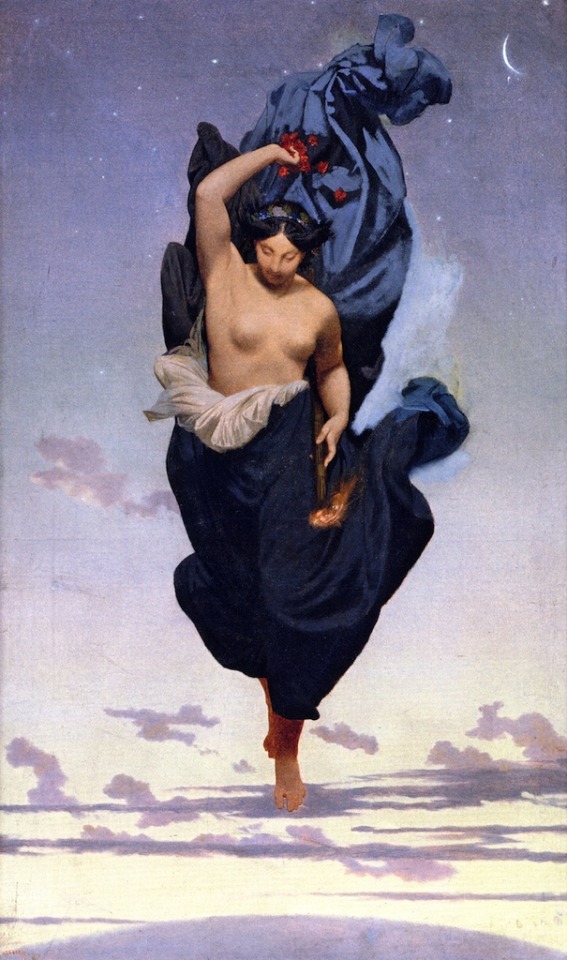
Night, Jean-Léon Gérôme, 1850-55
#classics#tagamemnon#Latin#lingua latina#poem#poetry#translation#poetry in translation#Latin language#Latin translation#Renaissance Latin#Neo-Latin#Andrea Navagero#elegiac couplets#Jean-Leon Gerome
293 notes
·
View notes
Photo
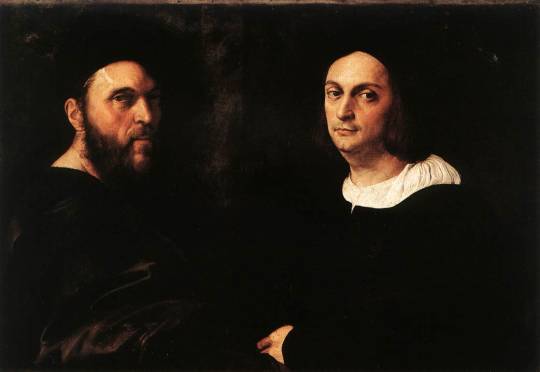
Portrait of Andrea Navagero and Agostino Beazzano, 1516, Raphael
Medium: oil,canvas
https://www.wikiart.org/en/raphael/portrait-of-andrea-navagero-and-agostino-beazzano
11 notes
·
View notes
Photo

Andrea Navagero, Jules Jacquet, 19th century, Harvard Art Museums: Prints
Harvard Art Museums/Fogg Museum, Gift of Belinda L. Randall from the collection of John Witt Randall
https://www.harvardartmuseums.org/collections/object/238640
4 notes
·
View notes
Text
Facebook è “una nuova Lilith che si frappone nel coito tra due sposi, per assorbire lo sperma di lui e frustrare il desiderio di lei”. Si può essere amici incontrandosi una volta per sempre, per tutte. Su un saggio di Franco La Cecla
Modestamente, ho pochissimi amici e quei pochissimi vivono così lontano o comunque ci vediamo così di rado che è come non averne affatto. L’inconveniente è che quando vengo a sapere qualcosa che mi mette voglia di gridarlo dai tetti, per esempio la notizia che Aldo Busi ha in cantiere un nuovo romanzo dal titolo celestiale Una masnada di belle fighe, non posso urlarlo affatto o rischierei la denuncia per schiamazzi; a parte questo, non vedo altri inconvenienti. Per lo stesso motivo, mi sa, nessuno mi ha detto e a nessuno posso dire l’entusiamo che m’ha dato leggere il saggio Essere amici di Franco La Cecla (Einaudi, 2019), capitatomi sotto gli occhi al bancone di una libreria mentre ero lì a ritirare tutt’altri titoli prenotati, ancora di Patrick Modiano, perché bisogna essere sempre grati alle proprie ossessioni, assicurando loro la più lunga vita possibile. Essere amici è un titolo che sfida qualsiasi imbarazzo, come quei manuali sul come dimagrire in quindici minuti o sul come ritrovare la stima in sé stessi persino più alla svelta – dando per scontato, con affetto, che una stima ci sia stata un tempo, prima di perderla malauguratamente – che non andresti mai a comprare tu di persona: delegheresti, o li ordineresti online con destinazione fermo posta.
*
Un bel brivido essere catturato dal titolo Essere amici, nel sollevarlo dal suo scaffale e senza nasconderlo andare alla cassa, copertina a vista, chiedendo per di più all’addetto se fosse ancora considerabile una novità e se dunque fosse valido lo sconto del quindici. Essere amici ama giocare con lo scandalo al pari dei busiani Sodomie in corpo 11 o Bisogna avere i coglioni per prenderlo nel culo o Un cuore di troppo: è raro che un libro eserciti il suo fascino indiscreto sin dal titolo. Da programma, che m’ero dato da solo, dovevo stendere uno dei soliti diverbi alla tra-me-e-me tra me e il libro di Ta-Nehisi Coates, Tra me e il mondo, ma come frenare il piacere di una considerazione come quella a pagina 7: “L’amicizia come un’avventura che non tutti possono permettersi di correre”? Il successo della Rowling non l’hanno fatto gli avada kedavra alla Silvan né quello della Ferrante chissà quale sovversiva tecnica del linguaggio: è l’amicizia il tema che non delude mai, non le aspettative di vendita. Gli amici: chi sono costoro? Quelli bravi, almeno. L’amicizia “È la ricompensa dei viventi.” Quale amicizia però? “Emmanuel Lévinas e Maurice Blanchot sono grandissimi amici. Si sono visti una sola volta da giovani, ma questo legame dura per tutta la vita”. Leggo questa frase e non posso che convincermi della necessità di leggere altre opere di Lévinas e di Blanchot, se proprio non di leggerne qualcuna per la prima volta: di che scorte di amore intellettuale devono essere dotati due uomini per restare amici tutta la vita pur essendosi visti un’unica volta e da quella volta in avanti restando uniti scrivendosi? Occorre essere giocoforza due grafomani clinici, per caso? Che per poter restare amici tutta la vita bisogni non esserlo mai stati davvero? Come a dire: i migliori matrimoni sono quelli in cui l’amore non finisce, non essendo proprio mai cominciato.
*
Il libro di La Cecla è tanto impudico da non risparmiarsi neppure le critiche serrate contro i social network; non lo fa più nessuno, il conformismo dell’anticonformista di grido sa che non gli conviene lamentarsi dell’unico mezzo a sua disposizione per crearsi un seguito che non preveda si debba scendere nessuna rampa di scale per andarlo ad ascoltare, ma per un antropologo che effettua il suo lavoro sul campo tra popoli anche facili all’accoltellamento tribale e amazzonico che noia bestiale e controevolutiva dev’essere la friendship? Facebook è paragonato a “una nuova Lilith […] che si frappone nel coito tra due sposi, per assorbire lo sperma di lui e frustrare il desiderio di lei. Facebook ci espropria del lavoro vitale che è quello di intrattenere rapporti, la costruzione quotidiana della nostra società intima e allargata”. Posso aver intuito male, ma sbaglio o La Cecla ha detto che Zuckenberg succhia? Già sono forti i dubbi su cos’è l’amicizia reale: stare a ragionare su quelle virtuali equivarrebbe a voler guardare gli angeli sotto la gonna per vedere che sesso photoshoppato c’è, lì. La Cecla cita Cicerone che cita una frase, pare, di Scipione: “Bisognerebbe amare essendo pronti a detestare un giorno.” L’amicizia va fondata sul suo diritto a essere revocata in qualsiasi momento; come l’amore? A patto di non freudizzarla troppo però: “C’è una forma di tardo freudismo in questa tendenza a voler ridurre tutto alla genitalità dei rapporti, la società nel suo farsi è molto più sofisticata e ama le distinzioni e le differenze”, ovvero: se gli uomini sono amici di altri uomini o le donne di altre donne non è detto che amicizia sia il nome consentito per l’amore represso di cui il nome non si potrebbe dire. Non occorre essere per forza romantici e autocastranti e pensare l’amicizia sia il solo tipo di amore eterno realizzabile, quello in cui non si consuma mai.
*
Il saggio di La Cecla è una grande convocazione di amici, a me più o meno sconosciuti: Derrida (che ha coniato una parola bruttissima: ostiptalità), Vladimir Jankélévitch, il gesuita Matteo Ricci, Montaigne, Émile Benventiste, Vivieros De Castro, Pavel Florenskij, Confucio, Caroline Bynum, João Guimarães Rosa, e parecchie altri, per comporre quello che “per la Gordimer è l’alveo salvifico della letteratura come amicizia vivente”. Dopodiché sarebbe facilissimo ricorrere alla massima secondo cui chi non amici non ha amici migliori dei libri, ma la Gordimer di amici ne ha avuti eccome; per fare qualche nome: Edward Said, Susan Sontag. Che dunque vada smantellata l’immagine stantia del lettore solitario quando non del tutto misantropo, sostituendogli l’ovvia verità secondo cui solo chi sa essere amico dei libri sa farsi degli amici come si deve? In carne e carta, preferibilmente.
Antonio Coda
*In copertina: Raffaello Sanzio, “Ritratto di Andrea Navagero e Agostino Beazzano”, 1515-1516
L'articolo Facebook è “una nuova Lilith che si frappone nel coito tra due sposi, per assorbire lo sperma di lui e frustrare il desiderio di lei”. Si può essere amici incontrandosi una volta per sempre, per tutte. Su un saggio di Franco La Cecla proviene da Pangea.
from pangea.news https://ift.tt/2UTSYOw
2 notes
·
View notes
Photo
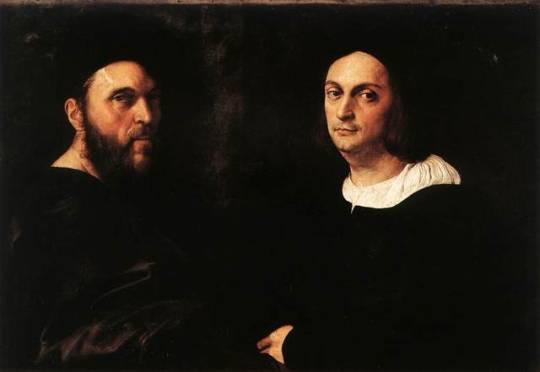
Portrait of Andrea Navagero and Agostino Beazzano, Raphael
Medium: oil, canvas
11 notes
·
View notes
Photo
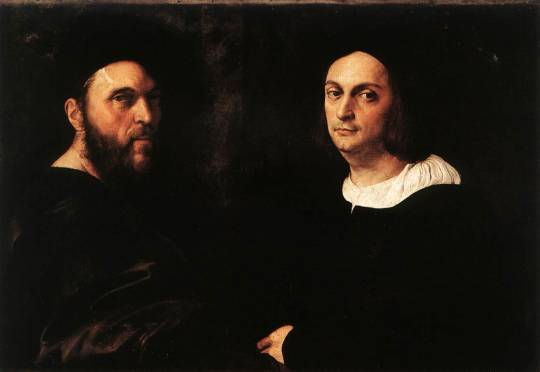
Portrait of Andrea Navagero and Agostino Beazzano, 1516, Raphael
Medium: oil,canvas
11 notes
·
View notes
Photo
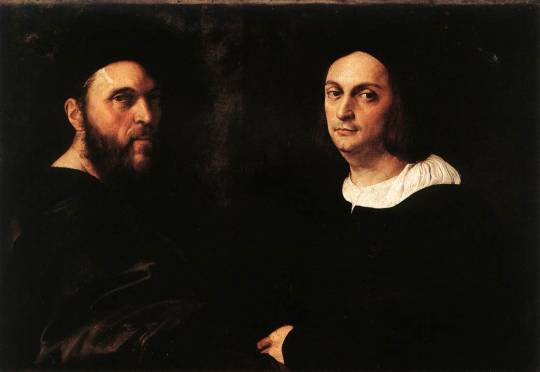
Portrait of Andrea Navagero and Agostino Beazzano, 1516, Raphael
Medium: oil,canvas
10 notes
·
View notes
Photo

Portrait of Andrea Navagero and Agostino Beazzano, 1516, Raphael
Medium: oil,canvas
6 notes
·
View notes
Photo
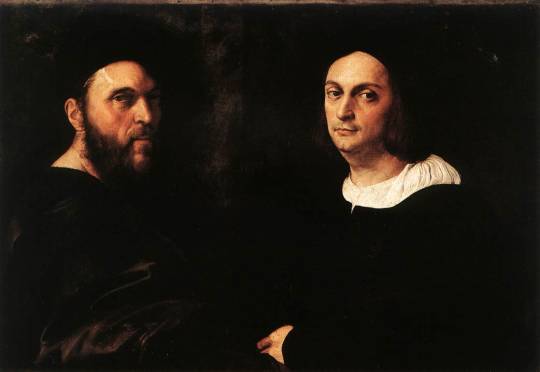
Portrait of Andrea Navagero and Agostino Beazzano, 1516, Raphael
Medium: oil,canvas
13 notes
·
View notes
Photo
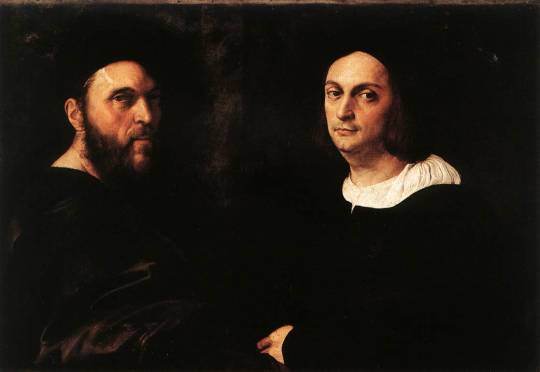
Portrait of Andrea Navagero and Agostino Beazzano, 1516, Raphael
Medium: oil,canvas
7 notes
·
View notes
Photo
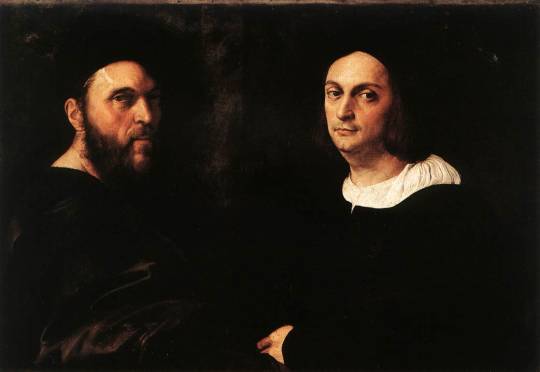
Portrait of Andrea Navagero and Agostino Beazzano, 1516, Raphael
Medium: oil,canvas
https://www.wikiart.org/en/raphael/portrait-of-andrea-navagero-and-agostino-beazzano
12 notes
·
View notes
Photo

Portrait of Andrea Navagero and Agostino Beazzano, 1516, Raphael
Medium: oil,canvas
7 notes
·
View notes
Photo
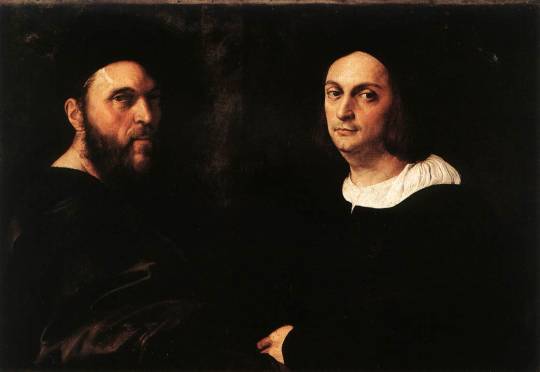
Portrait of Andrea Navagero and Agostino Beazzano, 1516, Raphael
Medium: oil,canvas
29 notes
·
View notes
Photo
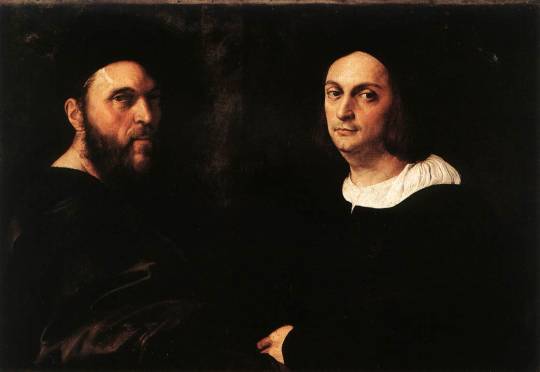
Portrait of Andrea Navagero and Agostino Beazzano, 1516, Raphael
Medium: oil,canvas
4 notes
·
View notes
Photo

Portrait of Andrea Navagero and Agostino Beazzano, 1516, Raphael
Medium: oil,canvas
9 notes
·
View notes